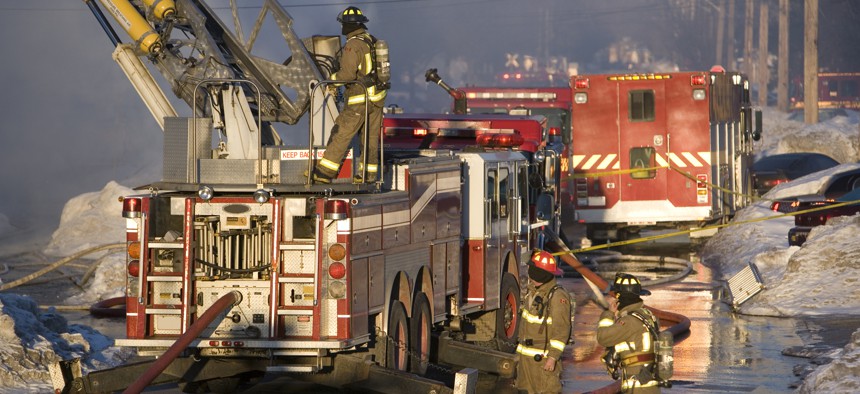sponsor content What's this?
Responding to Emergencies with Technology

Presented by
Carahsoft

Today’s world is rapidly changing. Climate change, increased urban density and advanced technology have all fundamentally impacted how cities and states collect information and respond to potential disasters, for both good and ill. As the number of potential disasters, and the amount of damage they can cause, increase, many agencies are seeing their budgets shrink and many feel they don’t have proper resources to get the job done.
Modern technology has transformed the way governments respond to emergencies, presenting both opportunities and challenges to agencies. Today, thanks to networks and devices in the internet of things, experts are able to gather as much information as they need to accurately prepare for and respond to threats. However, how to best choose what data is relevant, share it between agencies and effectively communicate it to the public are still big questions with no easy answer.
Tools like FirstNet, a nationwide broadband network that connects emergency responders, could prove to be invaluable. FirstNet helps provide local responders with the information and resources that they need to make informed decisions in dangerous situations. The network is still very much in the development stage, but its potentials could mean turning lost lives into saved ones.
Social media in particular has been both a blessing and a curse. Social networks allow government agencies to get critical information out to constituents quickly and easily. Increasingly, constituents are turning to social media as a primary news source — 42 percent of adults say they get their news from Facebook. At the same time, agencies constantly have to combat sensationalist, misleading and flat-out false information from other non-government sources that can do a lot of harm during emergency situations.
In recent history, no section of the country has had more experience with natural and man-made emergencies than the Gulf Coast. From catastrophic storms such as hurricanes like Katrina and Rita, to disasters like the BP oil spill, to homeland security threats posed by big events like Mardi Gras and the Super Bowl, the states of Louisiana, Alabama, Mississippi and Florida have certainly been tested.
With those trials comes added knowledge, experience and understanding, which makes the Gulf Coast a perfect place look at in order to examine how cities, states and the federal government respond to emergency: what they do well, what could be done better and where modern technology and information can help.
Hurricanes Katrina and Rita in particular, which New Orleans Mayor Mitch Landrieu states were man-made disasters, not natural disasters, due to the lack of preparedness at the time, were opportunities for growth at all levels of government. State, local and federal government agencies were hopefully able to learn from the catastrophic destruction and loss of life and lessen the impact of future disasters. Chief among lessons learned was the need for interoperability with a clear line of command between disparate government agencies and offices so that they could share data and work together on strategies.
While tools like FirstNet could make the difference in future Katrina- and Rita-like natural disasters, we still have a long way to go. Ultimately, it comes down to results. Teaming up with the right partners and utilizing the right tools can make all the difference. To learn more about how new technology and innovation is impacting emergency response, visit here.
This content is made possible by our sponsor. The editorial staff of Route Fifty was not involved in its preparation.





